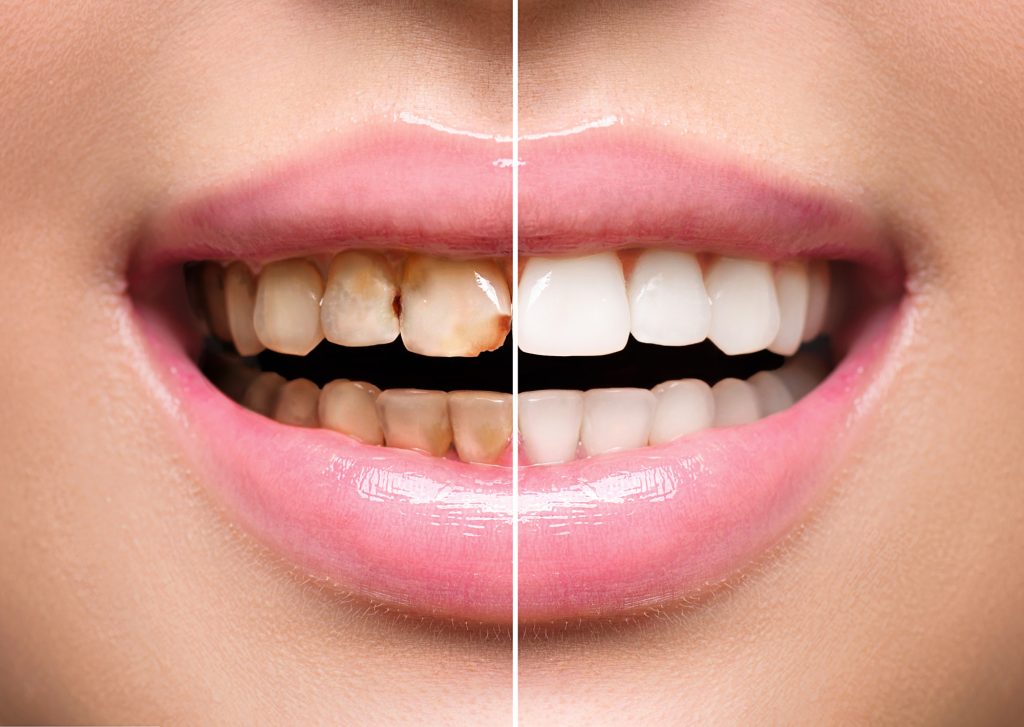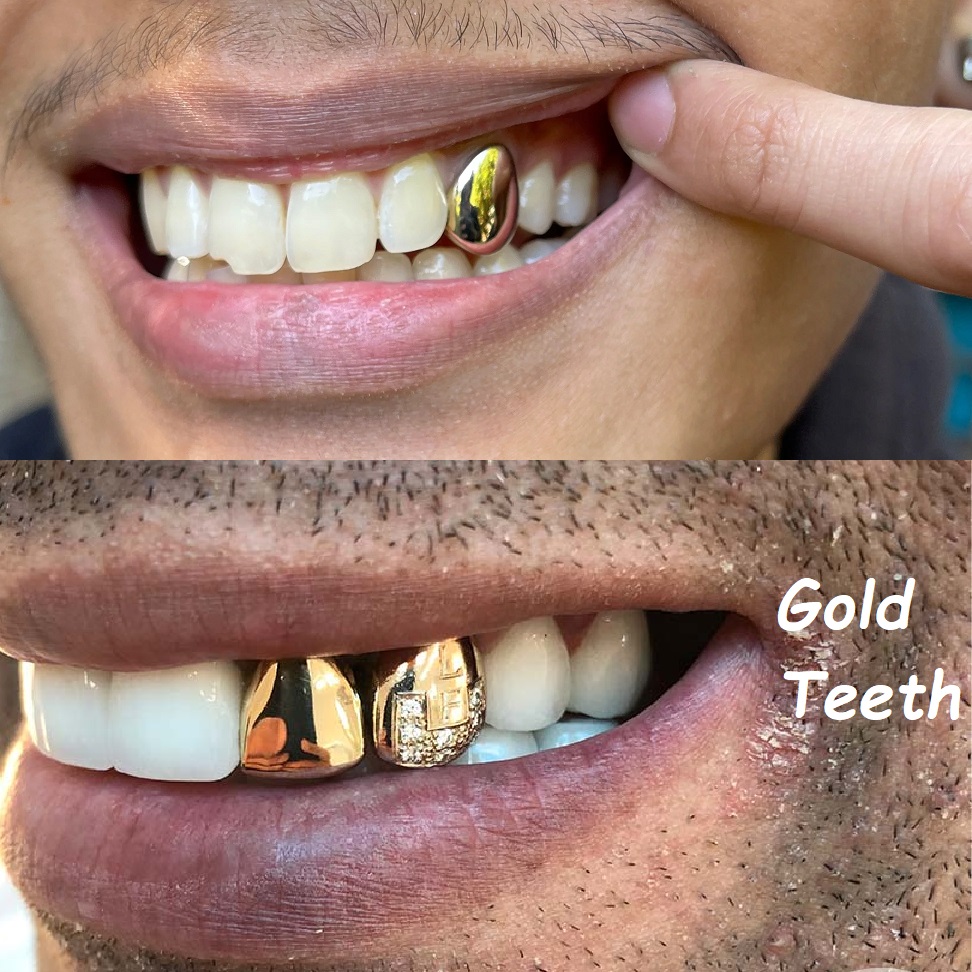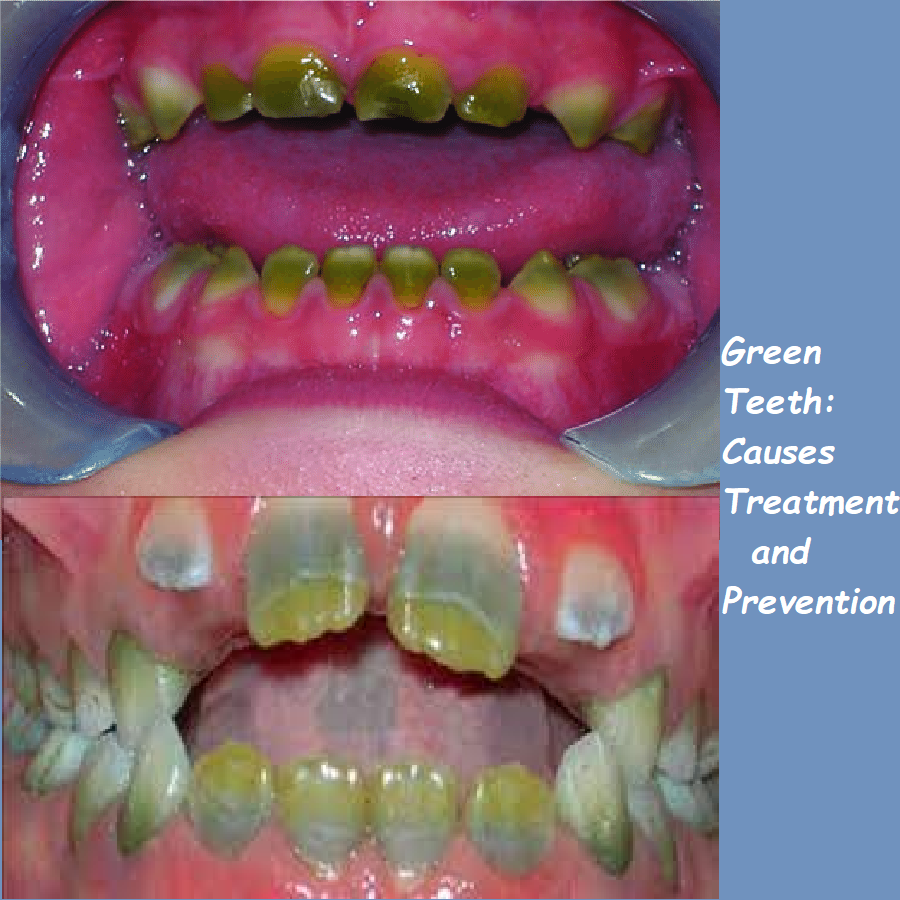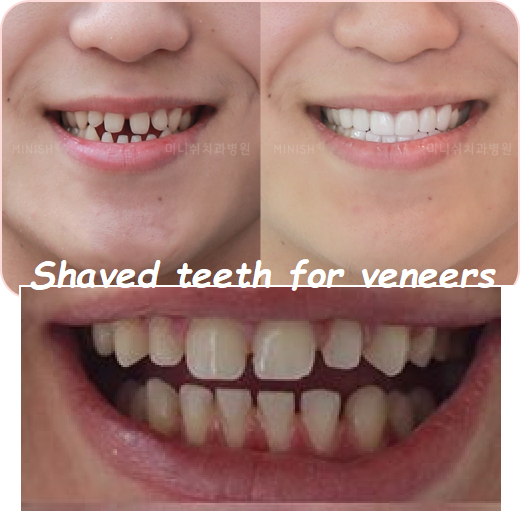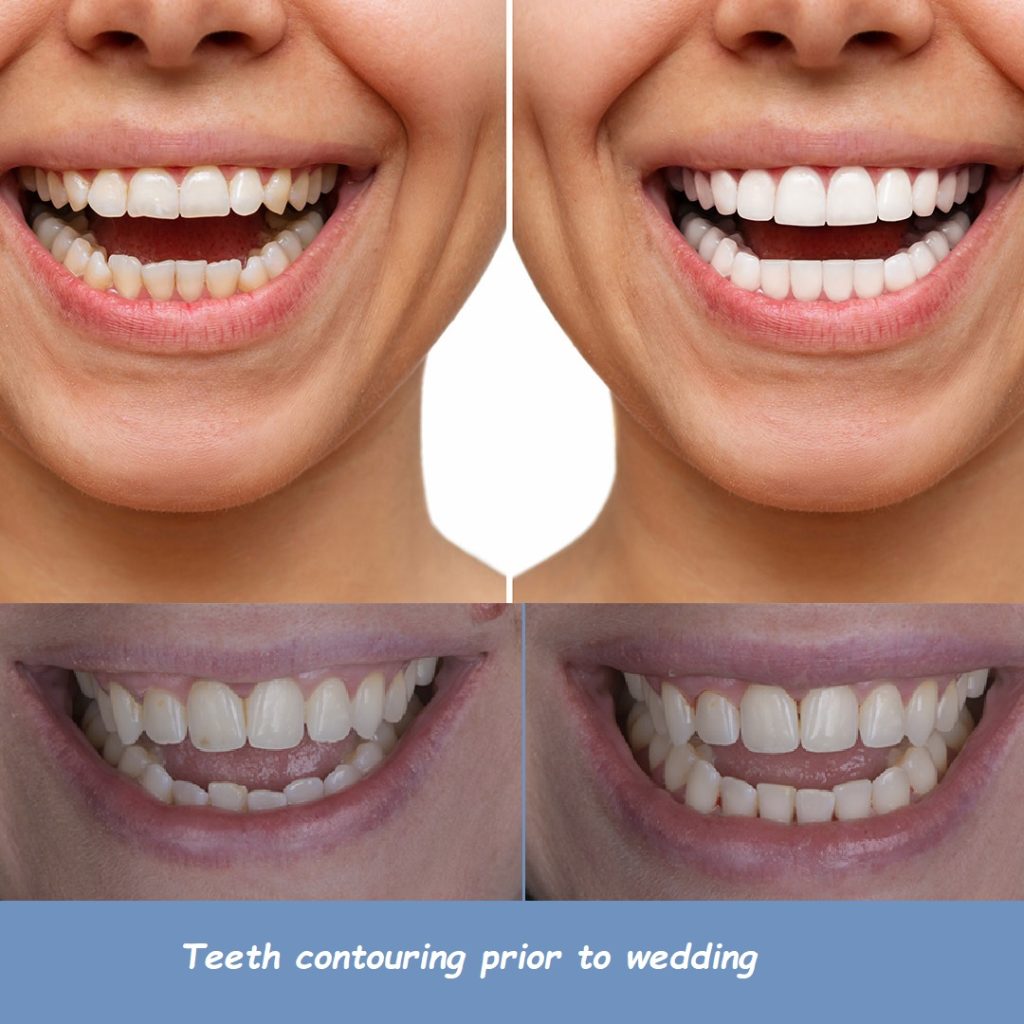front tooth crown
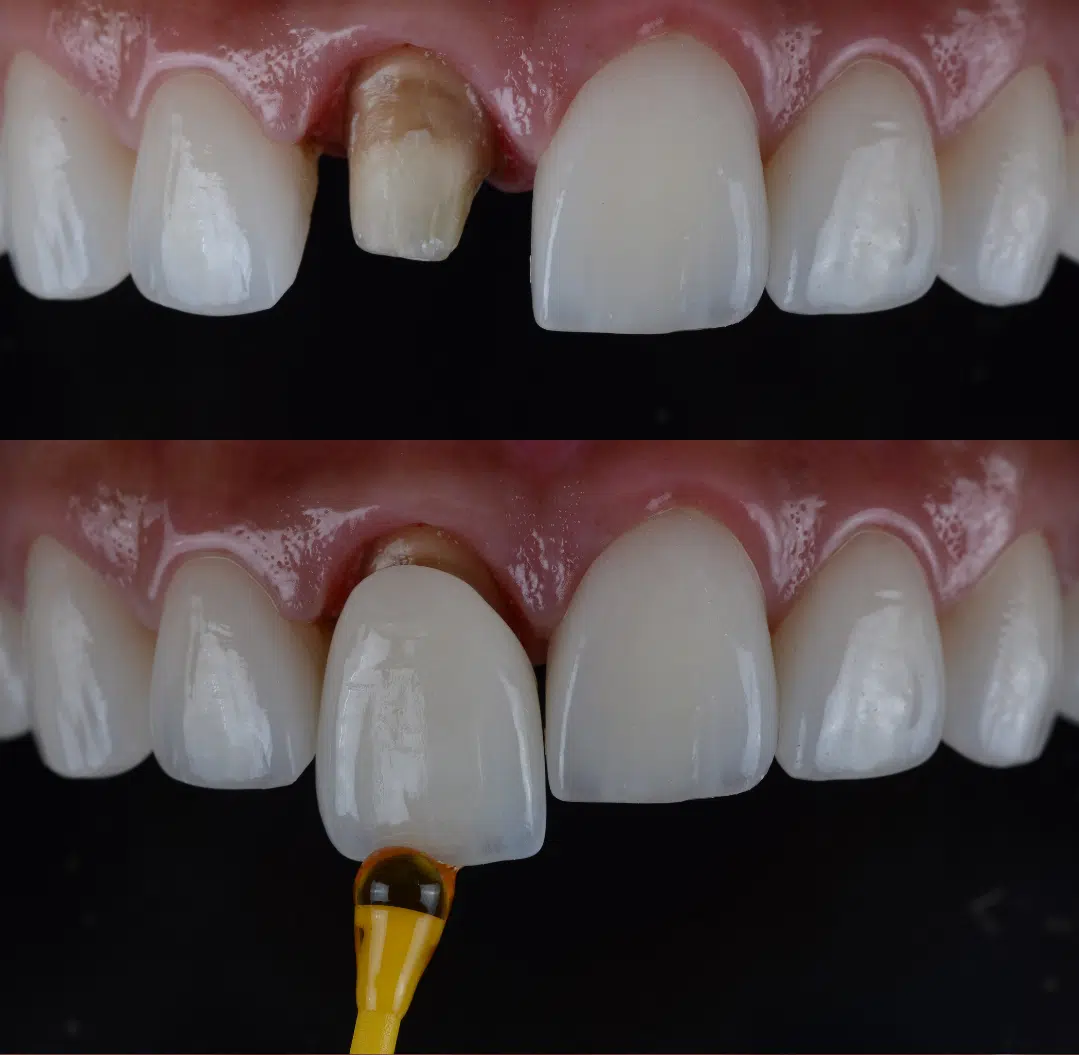
Comprehensive Guide to Front Tooth Crowns
A front tooth crown is a common dental solution for restoring the appearance and function of damaged or decayed front teeth. Crowns, also known as caps, cover the entire visible portion of a tooth, providing protection and aesthetic improvement. This comprehensive guide will explore everything you need to know about front tooth crowns, including their types, benefits, procedure, care, and cost considerations.
Understanding Front Tooth Crowns
What is a Front Tooth Crown?
A front tooth crown is a prosthetic device used to cover a damaged or decayed front tooth. It is designed to mimic the shape, size, and color of a natural tooth, providing a seamless appearance. Crowns can be made from various materials, each offering different benefits in terms of durability, aesthetics, and cost.
Why Do You Need a Front Tooth Crown?
There are several reasons why a dentist might recommend a front tooth crown:
- Decay or Damage: Significant decay or damage that cannot be repaired with a filling.
- Fractures or Cracks: To protect and restore a cracked or fractured tooth.
- Root Canal Treatment: To cover and protect a tooth after a root canal procedure.
- Cosmetic Improvement: To enhance the appearance of discolored or misshapen teeth.
- Wear and Tear: To strengthen teeth that have been worn down over time.
Types of Front Tooth Crowns
There are various types of materials used for front tooth crowns, each with its advantages and disadvantages.
1. Porcelain Crowns
Porcelain crowns are popular for front teeth because they offer the most natural appearance. They are designed to match the color and translucency of natural teeth, making them virtually indistinguishable. However, porcelain crowns can be more fragile compared to other materials and may require more careful handling.
2. Ceramic Crowns
Ceramic crowns are similar to porcelain crowns in terms of aesthetics. They are also highly biocompatible, making them suitable for people with metal allergies. Ceramic crowns are durable and provide a natural look, but they can be more expensive than other options.
3. Porcelain-Fused-to-Metal (PFM) Crowns
PFM crowns combine the aesthetics of porcelain with the strength of metal. The metal structure provides durability, while the porcelain overlay offers a natural appearance. However, the metal base can sometimes show through the porcelain, especially if the gum recedes.
4. Composite Resin Crowns
Composite resin crowns are made from a tooth-colored resin material. They are less expensive than porcelain or ceramic crowns and can be quickly applied. However, they are not as durable and may need to be replaced more frequently.
5. Zirconia Crowns
Zirconia crowns are known for their strength and durability. They are highly resistant to wear and provide a natural appearance. Zirconia crowns are an excellent option for patients looking for a long-lasting solution for their front teeth.
Benefits of Front Tooth Crowns
Front tooth crowns offer numerous benefits, making them a popular choice for dental restorations.
1. Improved Appearance
One of the main reasons for choosing a front tooth crown is the significant improvement in appearance. Crowns can cover discolored, misshapen, or damaged teeth, restoring a natural and attractive smile.
2. Enhanced Functionality
Crowns restore the full functionality of the tooth, allowing you to bite and chew with confidence. They provide strength and support to damaged teeth, preventing further wear and tear.
3. Durability
High-quality crowns, such as those made from zirconia or ceramic, are durable and can last for many years with proper care. They are resistant to staining and wear, providing a long-term solution for dental restoration.
4. Protection
Crowns protect the underlying tooth from further damage or decay. This is especially important after procedures like root canals, where the tooth structure may be weakened.
5. Confidence Boost
A beautiful smile can significantly boost your confidence and self-esteem. Front tooth crowns help you regain a natural-looking smile, enhancing your overall appearance and social interactions.
The Procedure for Getting a Front Tooth Crown
The process of getting a front tooth crown typically involves several steps, spread over multiple dental visits.
1. Initial Consultation
The first step is a consultation with your dentist. During this visit, the dentist will examine your teeth, take X-rays, and discuss your options. If a crown is deemed necessary, the dentist will explain the procedure, the materials available, and the associated costs.
2. Tooth Preparation
During the next visit, the dentist will prepare the tooth for the crown. This involves removing any decay and shaping the tooth to accommodate the crown. If a significant portion of the tooth is missing, the dentist may build up the tooth structure with a filling material.
3. Impressions
Once the tooth is prepared, the dentist will take impressions of your teeth. These impressions are sent to a dental lab, where the crown will be custom-made to fit your tooth precisely. In the meantime, a temporary crown may be placed to protect the prepared tooth.
4. Crown Fitting
When the permanent crown is ready, you will return to the dentist for fitting. The dentist will remove the temporary crown and place the permanent one, checking for proper fit and alignment. Adjustments may be made to ensure comfort and functionality.
5. Final Placement
Once the fit is perfect, the dentist will cement the crown in place. The tooth and crown will be polished, and you will be given instructions on how to care for your new crown.
Caring for a Front Tooth Crown
Proper care and maintenance are essential to ensure the longevity of your front tooth crown.
1. Oral Hygiene
Maintain good oral hygiene by brushing your teeth at least twice a day and flossing daily. Use a non-abrasive toothpaste to prevent scratching the crown’s surface.
2. Regular Dental Check-ups
Visit your dentist regularly for check-ups and cleanings. Regular dental visits help monitor the condition of your crown and the surrounding teeth.
3. Avoid Hard Foods
Avoid biting on hard foods or objects that could damage the crown. Be cautious with foods like ice, hard candies, and nuts.
4. Avoid Staining Agents
Although many crowns are resistant to staining, it is best to avoid excessive consumption of staining agents like coffee, tea, and red wine. Smoking can also stain the crown and should be avoided.
5. Wear a Mouthguard
If you grind your teeth at night, consider wearing a mouthguard to protect your crown and natural teeth from damage.
Cost Considerations
The cost of a front tooth crown can vary significantly based on several factors, including the material used, the complexity of the procedure, and your location.
1. Material
Different materials come with varying costs. Porcelain and ceramic crowns tend to be more expensive than composite resin or PFM crowns. Zirconia crowns, known for their durability, are often among the priciest options.
2. Dentist’s Expertise
The experience and reputation of the dentist can also affect the cost. Highly experienced dentists or specialists may charge more for their services.
3. Location
The cost of dental procedures can vary based on geographical location. Urban areas and regions with a higher cost of living may have higher dental fees.
4. Insurance Coverage
Check with your dental insurance provider to see if they cover the cost of crowns. Some insurance plans cover a portion of the cost, while others may cover the entire procedure.
Frequently Asked Questions
1. How long do front tooth crowns last?
The longevity of a front tooth crown depends on the material used and how well it is cared for. On average, crowns can last between 10-15 years, but with proper care, they can last even longer.
2. Are front tooth crowns noticeable?
High-quality crowns, especially those made from porcelain or ceramic, are designed to match the natural appearance of your teeth and are typically not noticeable.
3. Can I whiten my front tooth crown?
Crowns do not respond to traditional teeth whitening treatments. If you are considering whitening your teeth, discuss it with your dentist before getting a crown to ensure a consistent color match.
4. Will I experience pain after getting a front tooth crown?
It is normal to experience some sensitivity or discomfort after getting a crown. This usually subsides within a few days. If you experience severe pain or prolonged discomfort, contact your dentist.
5. Can a front tooth crown fall off?
While rare, a crown can become loose or fall off. If this happens, contact your dentist immediately. They can re-cement the crown or provide a replacement if necessary.
Conclusion
A front tooth crown is an effective and aesthetically pleasing solution for restoring damaged or decayed front teeth. By understanding the different types of crowns available, their benefits, the procedure involved, and how to care for them, you can make an informed decision about your dental health. Remember to consult with your dentist to determine the best option for your specific needs and enjoy the confidence of a restored smile.
Can You Do a Crown on a Front Tooth?
Crowns for Front Teeth: Feasibility and Considerations
Crowns are not only for molars; they can also be placed on front teeth. Here’s why and how:
1. Cosmetic and Functional Needs:
- Aesthetic Restoration: Front teeth crowns are often used to improve the appearance of teeth that are discolored, misshapen, or chipped.
- Structural Support: Crowns provide necessary support for teeth that are weakened or damaged by decay, cracks, or large fillings.
2. Types of Crowns Suitable for Front Teeth:
- Porcelain Crowns: These are popular for front teeth due to their ability to match the natural color and translucency of your teeth.
- Ceramic Crowns: Also highly aesthetic, ceramic crowns offer a natural look and are durable.
- Zirconia Crowns: These are strong and also offer good aesthetics, often used when both strength and appearance are important.
3. Procedure:
- Preparation: The dentist will shape the existing tooth to fit the crown.
- Impressions: Impressions are taken to create a custom crown.
- Temporary Crown: A temporary crown is placed until the permanent one is ready.
- Final Placement: The permanent crown is cemented in place after fitting and adjustments.
How Long Do Front Tooth Crowns Last?
Longevity of Front Tooth Crowns
The lifespan of front tooth crowns depends on various factors:
1. Materials:
- Porcelain Crowns: Typically last 10-15 years with proper care.
- Ceramic Crowns: Have a similar lifespan to porcelain crowns, about 10-15 years.
- Zirconia Crowns: These can last 15-20 years or more due to their strength and durability.
2. Oral Hygiene:
- Good Hygiene: Regular brushing, flossing, and dental check-ups can extend the lifespan of crowns.
- Avoiding Habits: Avoiding habits like biting nails, chewing ice, or using teeth as tools can prevent premature wear or damage.
3. Dental Care:
- Regular Check-ups: Routine visits to the dentist ensure that any issues with the crown are addressed early.
- Proper Maintenance: Proper maintenance by the dentist, such as polishing and adjustments, can prolong the crown’s life.
Are Front Crowns Painful?
Pain and Discomfort Associated with Front Tooth Crowns
Getting a crown on a front tooth generally involves minimal discomfort:
1. During the Procedure:
- Local Anesthesia: Dentists use local anesthesia to numb the area, so you should not feel pain during the preparation or fitting.
- Temporary Sensitivity: Some patients experience temporary sensitivity after the anesthesia wears off, which can be managed with over-the-counter pain relievers.
2. After the Procedure:
- Mild Discomfort: It’s common to have mild discomfort or soreness in the gums for a few days, especially after the temporary crown placement.
- Adjustment Period: There may be an adjustment period as you get used to the new crown, but any significant pain should be reported to the dentist.
3. Managing Pain:
- Pain Relief: Over-the-counter pain medications and avoiding very hot or cold foods can help manage discomfort.
- Dental Follow-Up: If pain persists or is severe, it’s important to consult your dentist to check for issues like improper fit or bite alignment.
Which Type of Crown is Best for Front Teeth?
Choosing the Best Crown for Front Teeth
Several types of crowns can be used for front teeth, each with its advantages:
1. Porcelain Crowns:
- Aesthetic Appeal: Porcelain crowns offer the most natural appearance, closely mimicking the translucency and color of natural teeth.
- Stain Resistance: They resist stains better than many other materials.
2. Ceramic Crowns:
- Natural Look: Ceramic crowns are also highly aesthetic and can be matched to the color of your natural teeth.
- Durability: While they are not as strong as metal-based crowns, they offer sufficient strength for front teeth.
3. Zirconia Crowns:
- Strength and Durability: Zirconia crowns are extremely strong and durable, making them suitable for those who need extra strength.
- Aesthetic Versatility: They can be designed to look very natural, although some people might find them slightly less translucent than porcelain.
4. E-Max Crowns:
- Lithium Disilicate: E-Max crowns are made from a type of ceramic called lithium disilicate, known for its superior aesthetics and strength.
- Versatility: These crowns offer a balance between strength and appearance, making them a popular choice for front teeth.
Can I Bite with a Front Tooth Crown?
Functionality of Front Tooth Crowns
Front tooth crowns are designed to restore both the appearance and function of your teeth:
1. Normal Biting and Chewing:
- Functionality: You should be able to bite and chew normally with a front tooth crown.
- Eating Habits: Avoid biting into very hard or sticky foods directly with the front teeth to prevent damage to the crown.
2. Strength and Durability:
- Material Strength: Materials like porcelain, ceramic, and zirconia are designed to withstand the forces of biting and chewing.
- Proper Fitting: A properly fitted crown should feel natural and allow you to bite and chew without discomfort.
3. Care and Maintenance:
- Avoid Excessive Force: While front tooth crowns are strong, using the teeth to open packages or bite nails can damage them.
- Regular Dental Visits: Regular check-ups ensure the crown remains in good condition and is functioning properly.
How Strong is a Front Tooth Crown?
Strength and Durability of Front Tooth Crowns
The strength of a front tooth crown depends on the material used and how well it is maintained:
1. Material Strength:
- Porcelain and Ceramic Crowns: These materials offer a good balance between aesthetics and strength, suitable for the less forceful biting required by front teeth.
- Zirconia Crowns: Known for their exceptional strength, zirconia crowns can withstand greater biting forces and are less likely to chip or break.
2. Bonding and Fit:
- Proper Adhesion: The bonding process and fit of the crown play crucial roles in its strength. A well-fitted crown that is properly bonded to the tooth will be stronger and more durable.
- Precision Fitting: Dentists ensure that the crown fits precisely to prevent any weak points that could lead to cracking or breaking.
3. Maintenance and Care:
- Good Oral Hygiene: Maintaining good oral hygiene helps prevent decay around the crown and the underlying tooth.
- Avoiding Excessive Force: Being mindful of the types of food you bite into and avoiding using teeth as tools can prolong the life and strength of the crown.
Conclusion
Front tooth crowns are a viable option for restoring both the functionality and aesthetics of damaged or weakened teeth. With options like porcelain, ceramic, zirconia, and E-Max crowns, patients can choose based on their needs for strength and appearance. Properly fitted and well-maintained crowns can last many years, providing a natural look and reliable function. Although the procedure involves minimal discomfort, any persistent pain or issues should be addressed with a dentist to ensure optimal results and long-term oral health.
What Are the Disadvantages of Crowns?
Potential Downsides of Dental Crowns
While dental crowns offer significant benefits in terms of restoring function and aesthetics, there are some potential disadvantages to consider:
1. Cost:
- Expensive: Crowns can be costly, especially if they are made from high-quality materials like porcelain or zirconia. Insurance may not cover the entire cost.
- Multiple Visits: The process typically requires multiple dental visits, which can add to the overall expense.
2. Sensitivity:
- Tooth Sensitivity: After the placement of a crown, some patients may experience increased sensitivity to hot or cold temperatures, especially if the tooth’s nerve is still present.
- Gum Irritation: The area around the crown may be sensitive or inflamed temporarily.
3. Risk of Damage:
- Chipping or Breakage: Porcelain crowns, while aesthetically pleasing, can chip or break under excessive force. Metal crowns are more durable but less natural-looking.
- Wear on Opposing Teeth: Crowns made of harder materials can wear down the opposing natural teeth, especially if there is an improper bite alignment.
4. Tooth Preparation:
- Irreversible Procedure: The tooth preparation process involves removing a significant amount of the natural tooth structure, which is irreversible.
- Possible Root Canal: In some cases, the tooth may need a root canal treatment before a crown is placed, especially if there is extensive decay or infection.
5. Fit and Comfort:
- Improper Fit: If the crown does not fit properly, it can cause discomfort, bite issues, and increased risk of decay under the crown.
- Adjustment Period: Patients may need time to get used to the feel of the crown, and adjustments might be necessary.
Do Front Crowns Fall Out Easily?
Stability and Longevity of Front Crowns
Front crowns are designed to be durable and stable, but there are factors that can affect their retention:
1. Proper Adhesion:
- Strong Bonding Agents: High-quality dental cements are used to adhere crowns securely to the prepared tooth, ensuring they stay in place.
- Correct Preparation: Proper tooth preparation and fitting techniques by the dentist enhance the stability of the crown.
2. Maintenance and Care:
- Good Oral Hygiene: Maintaining good oral hygiene practices, such as regular brushing and flossing, helps prevent decay and gum disease, which can affect the stability of the crown.
- Avoiding Excessive Force: Avoiding habits like chewing ice or using teeth as tools can prevent crowns from loosening or falling out.
3. Regular Check-Ups:
- Dental Visits: Regular dental check-ups allow the dentist to monitor the crown and ensure it remains securely in place.
- Addressing Issues: Any signs of loosening or discomfort should be promptly addressed by the dentist to prevent the crown from falling out.
Does a Front Tooth Crown Look Natural?
Aesthetic Considerations for Front Tooth Crowns
Front tooth crowns can be made to look very natural, especially with modern dental materials and techniques:
1. Material Choice:
- Porcelain and Ceramic: These materials are known for their ability to mimic the natural appearance of teeth, including color, translucency, and texture.
- Customization: Crowns are custom-made to match the size, shape, and color of the surrounding natural teeth.
2. Skilled Dentistry:
- Experienced Dentists: A skilled dentist can ensure that the crown is crafted and placed to blend seamlessly with the natural teeth.
- Advanced Techniques: Modern dental techniques and technologies, such as digital impressions and computer-aided design, enhance the accuracy and appearance of crowns.
3. Natural Appearance:
- Translucency: High-quality crowns reflect light similarly to natural teeth, providing a more realistic look.
- Fit and Contour: Properly fitted crowns align well with the gum line and adjacent teeth, contributing to a natural appearance.
Can a Crown Get a Cavity?
Risks of Decay Under and Around Crowns
While the crown itself cannot get a cavity, the natural tooth underneath and the surrounding area can still be susceptible to decay:
1. Margins of the Crown:
- Decay at Margins: The area where the crown meets the natural tooth (the margins) can be prone to decay if plaque and bacteria accumulate.
- Proper Sealing: A well-fitted crown with proper sealing reduces the risk of decay at the margins.
2. Oral Hygiene:
- Regular Brushing and Flossing: Good oral hygiene practices are crucial to prevent decay around the crown. Special attention should be given to cleaning the area where the crown meets the gum line.
- Professional Cleanings: Regular dental cleanings and check-ups help maintain oral health and prevent decay.
3. Dietary Habits:
- Limiting Sugary Foods: Reducing the intake of sugary and acidic foods can help prevent decay.
- Hydration: Drinking plenty of water helps wash away food particles and bacteria.
Can You Eat After a Crown?
Eating and Functionality Post-Crown Placement
After getting a crown, it’s important to follow your dentist’s instructions regarding eating:
1. Temporary Crowns:
- Soft Foods: With a temporary crown, it’s advisable to eat soft foods and avoid sticky, hard, or chewy foods that could dislodge the crown.
- Avoid Extreme Temperatures: Avoid very hot or cold foods that could cause sensitivity or discomfort.
2. Permanent Crowns:
- Normal Eating: Once the permanent crown is placed and adjusted, you should be able to eat normally.
- Caution with Hard Foods: Be cautious with very hard foods (e.g., nuts, ice) to prevent damage to the crown.
3. Post-Procedure Care:
- Immediate Post-Procedure: It’s often recommended to avoid eating until the numbness from the anesthesia wears off to prevent biting your tongue or cheek.
- Gradual Introduction: Gradually reintroduce tougher foods as you get used to the new crown.
Is Crown Removal Painful?
Crown Removal Process and Associated Discomfort
Crown removal is generally not a painful process, but here’s what to expect:
1. Local Anesthesia:
- Numbing the Area: Dentists usually apply local anesthesia to numb the area around the crown, ensuring minimal discomfort during the procedure.
- Minimal Pain: The numbing agent helps prevent pain, although you might feel pressure or slight discomfort.
2. Removal Techniques:
- Cutting the Crown: Dentists often use a dental drill to carefully cut the crown and remove it in sections. This method minimizes damage to the underlying tooth.
- Loosening the Crown: In some cases, the crown can be gently pried off without cutting, depending on the type of cement used and the condition of the crown.
3. Post-Removal Care:
- Managing Discomfort: Any discomfort after crown removal can usually be managed with over-the-counter pain relievers.
- Temporary Coverage: A temporary crown or filling may be placed to protect the tooth until a new crown is made, ensuring continued comfort.
Conclusion
Crowns are a reliable solution for restoring and protecting damaged teeth, including front teeth. Understanding the advantages and potential disadvantages, as well as the processes involved in crown placement, maintenance, and removal, helps patients make informed decisions about their dental care. Front tooth crowns can look natural and function effectively, provided they are properly maintained and cared for. Regular dental check-ups and good oral hygiene practices are essential to ensure the longevity and health of crowns.

